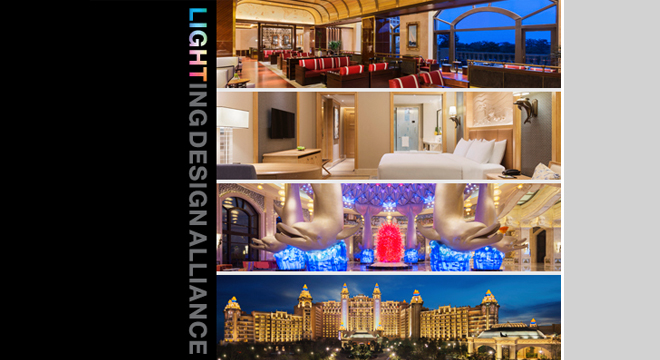As someone who admittedly entered the lighting design field by accident, Chip Israel has built a successful career over the past 27 years – including founding his own architectural lighting design firm in 1992 – Lighting Design Alliance which is headquartered in Los Angeles, CA.
 |
Chip Israel talks in an interview with Philips Lighting about his lighting design vision. (All Photos Courtesy of Philips Lighting)
|
Throughout his career, he was elected as a fellow in the IALD, is Past President of the IALD Education Trust and the Designer Lighting Forum, and has received an Outstanding Engineering Alumnus Award from Pennsylvania State University College of Engineering and the Martin’s Professional Lighting Designer of the Year Award (2002). In addition, Chip also presided over the Illuminating Engineering Society with the highest honor as their President for the 2012–2013 term. Since 2013, he has been keeping busy working on several IES Committees and volunteering on additional Educational endeavors like Penn State’s Project Candle, Otis Lighting program and Colorado’s Rocky Mountain Lighting Institute. In addition, Chip is a member of the advisory board for the annual CLUE Lighting Competition.
What do you feel is the most important aspect of lighting design?
The artistic vision! Having the initial visualization of what you want the space to look like and feel like, without concentrating on luminance or illuminance. Once you have the vision then you need the commitment and passion to follow it through; there’s a lot of coordination in executing your vision, which can be frustrating and challenging at times. When you bring your vision to life, you end up with a beautiful project that meets the owner’s requirements at the completion of the job.
 |
|
|
How would you characterize the lighting style of your firm?
Our style focuses on the appropriateness of design. It’s our job is to educate our clients – to offer them options and help mentor them through the decision making process so they can decide what the best solution is for them. We’ve worked on some of the most energy efficient buildings, as well as very energy intensive buildings, such as casinos. The entire design process is about compromise because it’s very rare that you have an unlimited budget and/or unlimited direction to do whatever you want. At the end of the day you have to meet the practical needs of the client, while creating an aesthetically pleasing space. We’ve been very lucky to have clients who understand that, as well as the benefits of good quality lighting; they respect our knowledge and work to integrate it into the project. You should strive to make every job better than it would’ve been without you.
Looking back at your experiences, what is your favorite part of being a lighting designer, business owner, and volunteer?
There are so many things I enjoy, but I would say my favorite part is the people. Every day you’re meeting with people and to me that’s what is inspirational, fun and sometimes challenging. I’ve met some of the greatest people in the world and, collectively, the focus is on creating a better industry rather than competition amongst each other. It’s extremely rewarding and that’s why we keep volunteering and encourage other people to do that too. My second favorite thing is that every day is different, which is really important. The fact that things keep evolving presents us with new opportunities and makes our job different every day; no two days are the same and that’s a great reason to get up in the morning!
What about the CLUE competition? Can you expand on your role in this industry initiative and how you see it inspiring future generations?
The Clue competition is unique as it truly brings together young, talented designers and gives them a forum to display their creativity. The competition gives entrants direct accessibility to top design professionals. The top projects are then shared through all types of social media, corporate events and print to assist in the building of their promising careers. As the program grows, the impact and wide spread coverage will be exponential.













